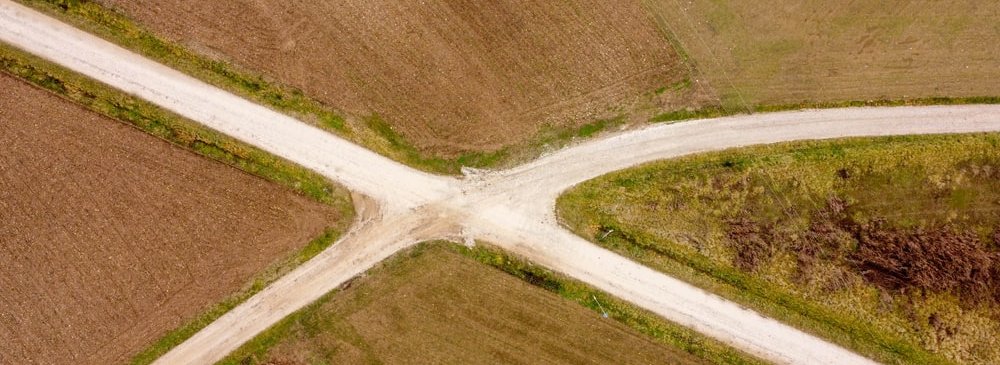| 5 mins read
On 9 December 1968, as tensions were rising in the province between Catholic nationalists and Protestant unionists, the former Ulster Unionist Prime Minister of Northern Ireland, Terence O’Neill, gave a televised broadcast in which he proclaimed “Ulster stands at the crossroads”.
With a population that was increasingly polarising over a myriad of issues symbolising deep ethnic divisions, O’Neill’s statement represented an impassioned plea from a liberal unionist to many of the electorate to step back from the brink. One year later, Northern Ireland entered a sustained and prolonged period of armed conflict that became known as the Troubles.
Since the paramilitary ceasefires of 1994 and the Good Friday Agreement of 1998, Northern Irish society has travelled a significant distance towards a prosperous future. Numerous agreements have subsequently been signed that build upon the shared governance arrangements envisaged in 1998. As with any post-conflict peace process, there have been several problems along the way, including a serious dissident republican paramilitary campaign and public disorder relating to parades, protests, and the contentious nature of public symbols such as flags.
Brexit and the imposition of the Protocol reintroduced a deeply divisive topic back into Irish politics that was calmed with the Good Friday Agreement: the Irish border and the nature of sovereignty. Despite the significance it would bring in UK-EU withdrawal negotiations, the debate around the future of borderism on the island of Ireland did not receive significant attention in the Brexit debates prior to the EU Brexit referendum in June, 2016. The consequential political wranglings over the next few years eventually distilled into the Withdrawal Agreement that saw an economic Irish Sea border come into existence at one minute past midnight on 1st January 2021: Northern Ireland’s Centenary Year.
During the negotiations on a post-Brexit UK-EU agreement, senior figures including the Irish Taoiseach, warned that customs posts along the Irish-UK border would possibly be targeted by dissident republican paramilitary organisations while holding a photo of the aftermath of a Provisional IRA bomb attack upon a customs post in 1974. The degree to which the prospect of a return to violence featured in the run up to the signing of the Withdrawal Agreement convinced many unionists and loyalists that not only was the Protocol an assault on the fabric of the Union without consent (thereby breaking a core principle of the Belfast Agreement), but it was also designed to placate the threat of republican violence.
In 2021, spontaneous, localised protests that led to some of the worst rioting seen in Northern Ireland since the Troubles gradually coalesced into a cohesive anti-Protocol movement that enjoys the support of political unionism (except the UUP). Alongside this protest movement, rumblings within dormant loyalist paramilitary groups have indicated a possible campaign of violence against the continued implementation of the Protocol. Recently, the Ulster Volunteer Force (the oldest loyalist paramilitary group) disrupted a cross-community event in North Belfast with a hoax proxy bomb attack. The event was targeted due to the presence of the Irish Foreign Minister, Simon Coveney.
The current situation in Northern Ireland bears an uncanny resemblance to that of 1969 whereby one section of the community gradually began engaging in street politics and armed violence due to the burden of grievances (perceived or otherwise) that were not being addressed by constitutional politics. In 1969, that was the Irish nationalist community. In 2022, it is the British unionist community. The dynamics and nature of Northern Irish politics from political elitism to the grassroots community networks dictates that a return to violence is relatively straightforward if the conditions are right.
I argue that we are approaching a position where those conditions for violence may be realised.
In under a month’s time, Northern Ireland’s electorate will go to the polls. The outcome of the election has the potential to take Northern Ireland in radically different political directions. If Sinn Féin emerge as the largest political party, it is probable the republican leadership will travel the world making the case for a referendum on Irish unity which they will justify based on their electoral strength north and south of the border. This will perhaps further unnerve and destabilise an already anxious grassroots unionist base.
Furthermore, should unionism mutate from a unipolar, DUP-led political force into a multipolar, DUP-TUV-UUP movement, deeper instability will prevail as intra-unionist infighting and squabbling will further disconnect the leadership from their voting bases while also fragmenting a movement that potentially faces a republican monolith.
In 1968, Northern Ireland stood at a crossroads. Perhaps in 2022, it finds itself at another. What direction the province travels will depend on the outcome of several variables over the next few weeks and months.
The author is a member of the DUP in Northern Ireland.




